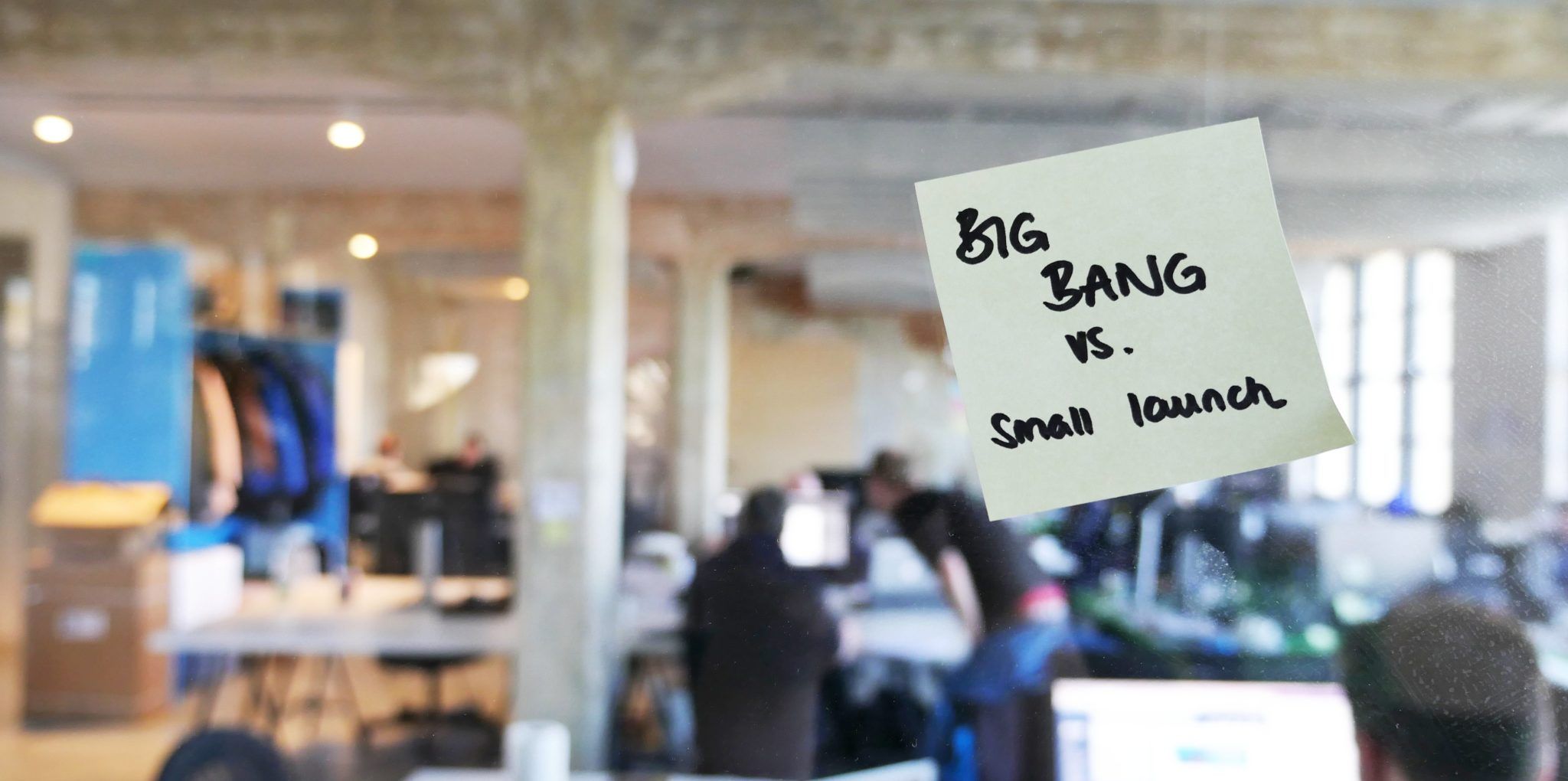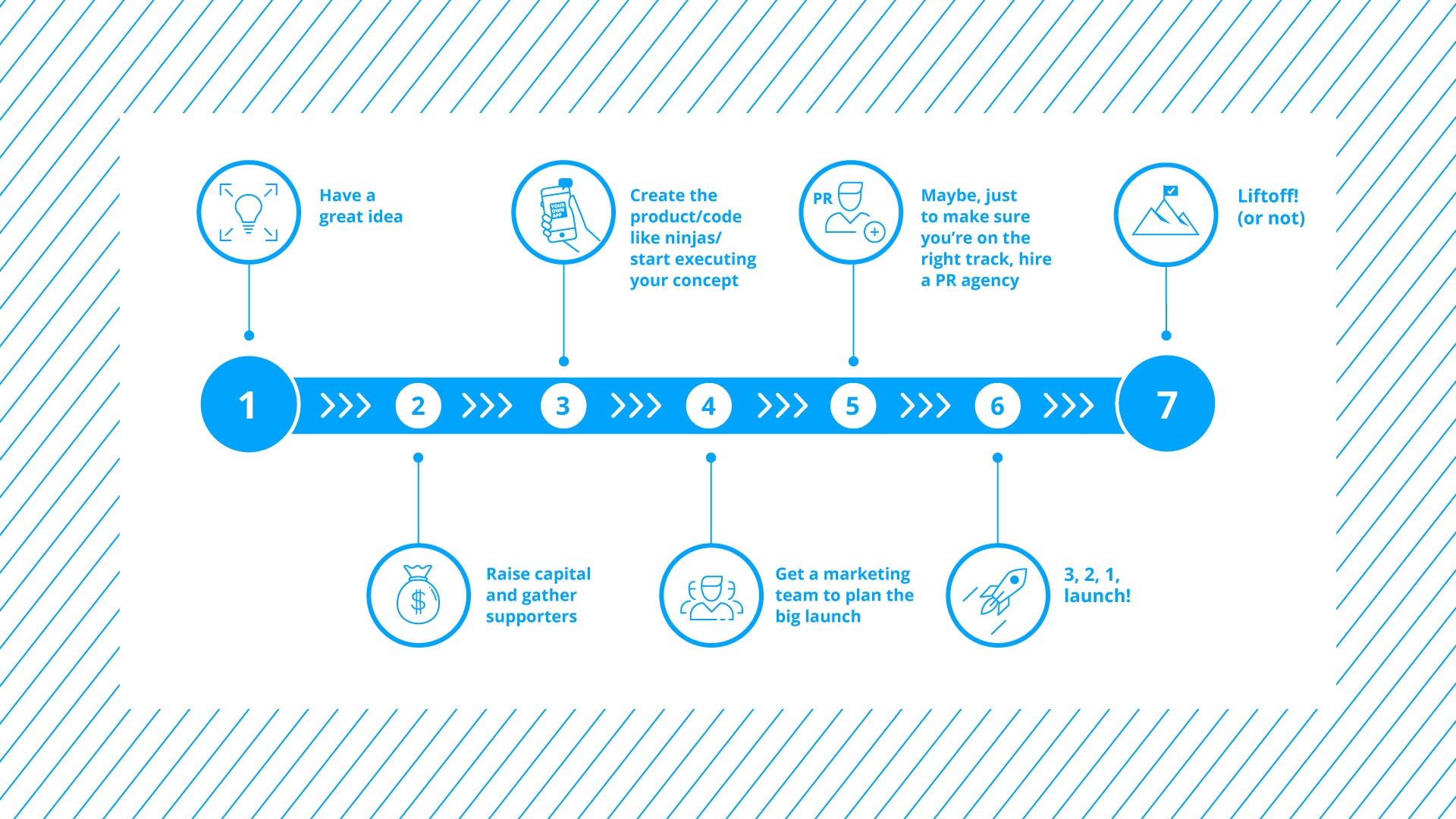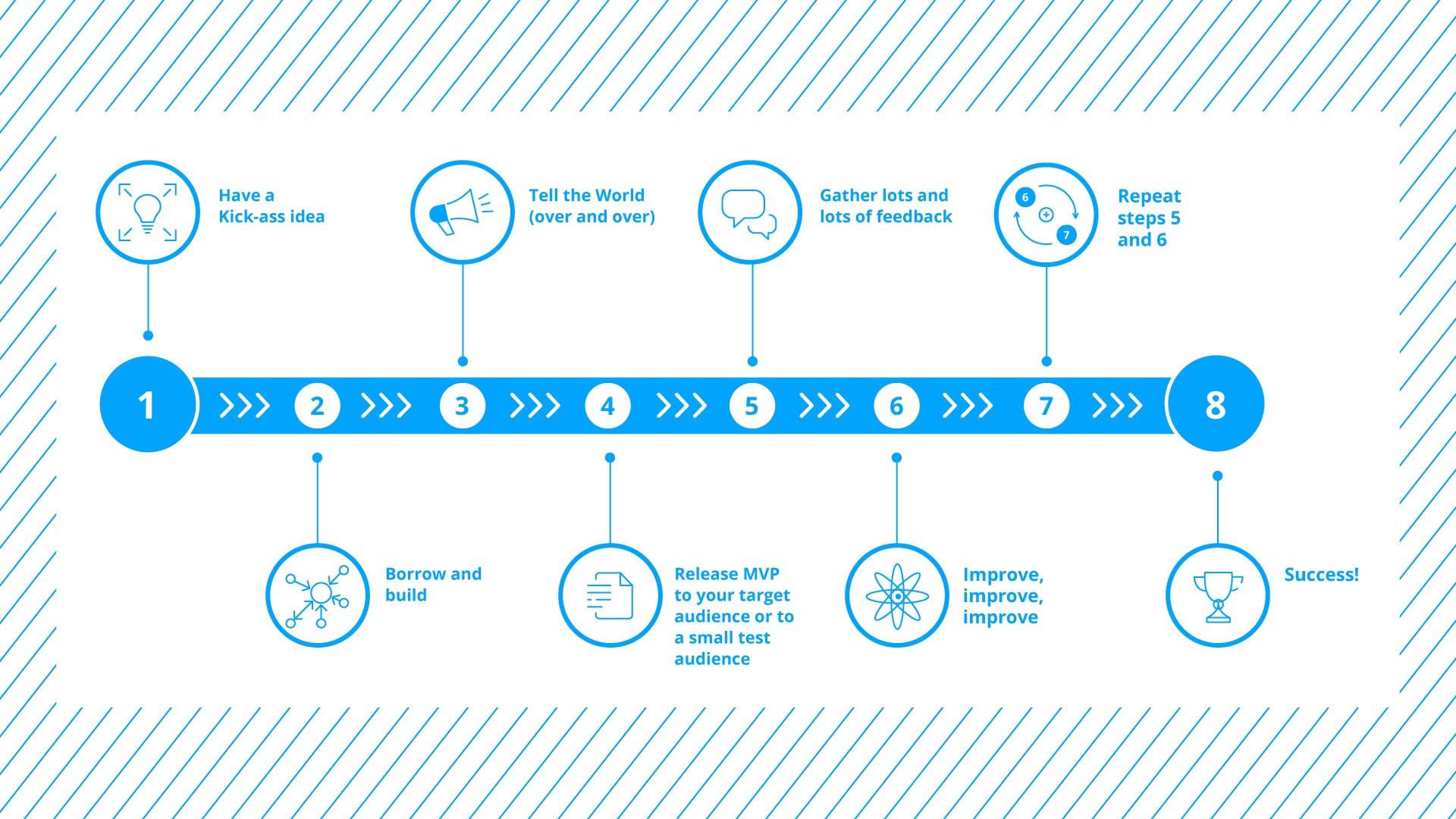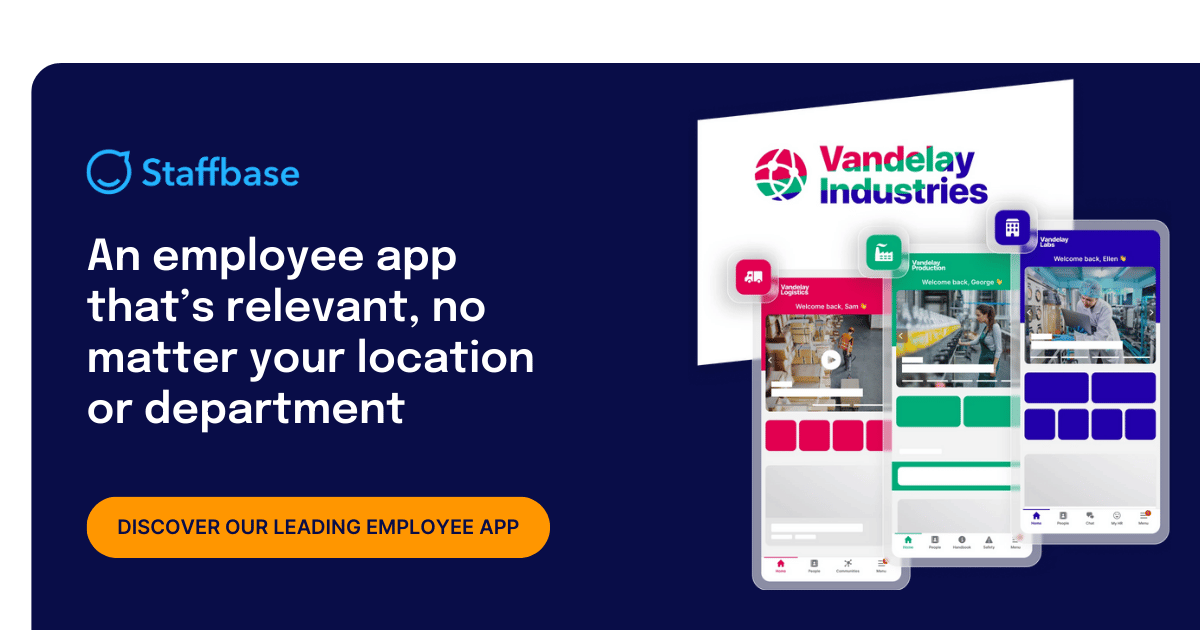Big Bang vs. Small Launch: The Right Start for Your Employee App

Launching an employee app is kind of like launching a business. Planning is critical, and both require a strong start in order to set the pace toward a finish line that never really comes. Why? Because your goals are constantly evolving with every new milestone you reach.

In the startup and IT worlds, there are two popular launch methods for an employee app: The Big Bang and the Small Launch. To figure out which one might work for your business, let’s compare some real-life examples of the two.
The Big Bang
A Big Bang approach works similar to the Big Bang theory: You start with a single but powerful idea that expands behind the scenes into a full product; you tease potential customers with promotions about its pending arrival; and finally, you launch the product with a massive release that’s meant to surprise and excite customers.
Apple excels at launching products with a Big Bang. The late Apple CEO, Steve Jobs, delivered keynotes to audiences in the millions announcing ideas, products, and inventions. His phrase “just one more thing” was a cue for something grand, signaling to people that their lives were about to change.
The steps of a Big Bang launch might go something like this:

Advantages of a Big Bang Launch:
Finished Product—When you launch with a Big Bang, your product is expected to be 100% ready for the world with less effort needed for tweaks and changes following launch. That ideally leaves more time to focus on marketing, sales, and a success strategy.
Faster Return on Investment (ROI)—You launch to an audience who highly anticipates your product. Ideally this means that a lot of people will immediately buy it, putting money in the bank.
Guaranteed Buzz—Because you kept it quiet for so long, everyone was anticipating your next move, including media and industry players. Your big reveal will likely be big news.
Competitive Edge—Your hush-hush approach kept competitors out of the loop prior to launch, and it will take them a while to catch up. You now have a competitive advantage, at least for a while.
Disadvantages of a Big Bang Launch:
High Risk—By going big, you’re putting all your eggs into one basket. This is your one shot, and if it backfires, making improvements or changes pretty much means returning to square one.
Missed Details—In the rush to get everything ready and out the door, details can be overlooked or deemed unimportant, resulting in a product that’s less than perfect with little room for future growth.
Mystery Buyers—Since you kept your product hidden, you haven’t really been able to consult its potential audience. You might think you know what they want, but you can’t be sure until the product is actually in their hands.
Finally, a Big Bang launch will only work if you’re super confident that your product is perfect, with a 100% market fit, amazing marketing, and a strong fan base or a set audience that you KNOW for sure will buy the product.
Launching an employee app with a big bang is only an option if you’re confident about the size of your audience and believe that they’ll adapt quickly to the new tool. This will mean having run an extensive pilot or test phase; setting up every news channels and plugin perfectly; and having put together an extensive marketing campaign accompanied by a big event or, at the very least, meeting.
Launching an employee communications app is just one step of a long-term project. Running it effectively means giving your employees the time to get used to their new tool. Adoption rates rarely go from zero to hero. Excited as you may be by everything an employee app can offer, it’s important to be realistic. Your app is not the new iPhone, and 9 times out of 10 we wouldn’t advise you to attempt launching it as if it were. Patience, as they say, is a virtue.
The Small Launch
The Small Launch is a method in which a product is released before it’s 100% finished. Instead of trying to create something perfect, this approach focuses on a basic idea and then develops it over time with input from actual users. Think of it as a kind of Darwinian evolution, with your product changing like the beak of a finch.
This concept is often connected to an MVP, or minimum viable product, “the version of a new product a team uses to collect the maximum amount of validated learning about customers with the least effort” (Wikipedia). Meaning you launch a version of your idea that takes the least effort to produce and then constantly improve it based on the input and needs of its users.
Facebook, Airbnb, and Spotify are three famous examples of companies that began with an MVP.
Facebook’s MVP connected students and let them post messages. The idea of social networking wasn’t new—there were already platforms like Classmates, Friendster, and MySpace—but the simplicity of Facebook’s approach resulted in enormous success. All the features we know and love today, such as likes, comments, sharing, video, events, and groups were developed later in the process. Learning: Your product doesn’t have to be the only one to do something, it just has to do it better than everyone else.
Airbnb’s initial concept was to help people make money by renting out their empty rooms while at the same time allowing travelers to find cheap places to stay. The company’s founders, Brian Chesky and Joe Gebbia, had the idea after having trouble affording their San Francisco rent. Their MVP of the idea was to provide accommodation in their own apartment. Brian and Joe took a few pictures of their loft, created a simple web page, and soon enough had three paying guests. In order to improve the concept, founder Paul Chesky lived for a time exclusively in Airbnbs. Learning: You have to eat your own dog food to find out how it really tastes.
Spotify is another one of these services that seemingly appeared out of nowhere to become quickly adored by nearly every millennial in the western world. The idea was simple: they wanted to build the very best music streaming service. Their MVP was a basic desktop version. Only later did they develop their mobile app, improving their design and signing more and more artists. Learning: Concentrate on your core feature first.
Launching small would typically go like this:

Advantages of a Small Launch approach:
Give the People What They Want—You build a product that conforms to your market’s requirements. The small launch is designed to fulfill your prospects’ needs by determining what they are through trial and error. The product is agile, allowing it to be adjusted multiple times.
Know Your Audience—You build a product together with users who are eager to use it. By making improvements based on their qualifications, you make it more likely that they’ll ultimately buy it.
Be Usain Bolt—If you launch fast you can be working with real customers in 4–6 months, as opposed to 1–2 years. Needs, competitors, and costs change rapidly in today’s marketplace, so even if your product was cutting edge twelve months ago, the same might not be the case today. By launching an MVP you’ll be able to get a product to market relatively soon and make developments and adjustments on the fly.
Find a Fanbase—Look for partners, channels, and investors ASAP. The earlier you launch your product the earlier you’ll be able to do this—after all, there’s nothing like a real product for getting interested parties onboard. This also applies to your customers.
Be Social—Get a website and use social channels. Starting a website and a blog will cost you next to nothing, but it’s a great way to build momentum even before launching your MVP. By expanding those channels, utilizing SEO analyses, and running ads in Facebook and LinkedIn, you can make sure your product is visible even without a Big Bang.
Lower Your Risk—Because there’s no hard-and-fast deadline, you’ll be able to adjust your product as necessary and make improvements infinitely.
Disadvantages of a Small Launch:
Constant Work—It takes time before you have the ideal product. And the reality is that it might never be perfect. Take Facebook as an example: Even after fourteen years the product is still evolving, adding new features, and expanding their user cycle as a result.
Be Imperfect—You will have to deal with imperfection and throwaways. In fact, don’t be surprised if your audience hates your MVP. But that’s not an excuse to be lazy and launch a product that doesn’t work with the expectation that feedback will fix it. Your MVP needs to provide perceived value for your audience to be interested enough to care. If your aim is to launch a car, your MVP at the very least needs wheels.
The small launch of an employee app might work like this: You first provide a basic version of the app that maybe addresses one or two use cases, and then develop it through the guidance of regular employee feedback. This obviously doesn’t mean that you shouldn’t put any work into the set-up before you launch. There’s still crucial work going into things like design, the various news channels, and practical plugins. It simply means that you’re under less pressure to get it all perfect from square one.
Additionally, you might want to limit the number of languages or locations to which you roll out the app, keeping plugins to a minimum so as to confirm that all of its basic features run properly. Once you establish a stable basis you can go bananas offering new features, confident that your app is built upon a solid foundation. Furthermore, your employees will appreciate and be engaged by the opportunity to shape their new tool as opposed to just being presented with something they’re expected to use, no questions asked.
So where does that leave us?
Basically, unless you’re 100% certain that every employee in your company is eagerly waiting for an employee app, and you know exactly which use cases they want and need it to feature, it’s best to start with a Small Launch approach. There’s no shame in launching your employee app as a pilot or with just one use case. In fact, doing so leaves you with plenty of room for improvement. The sky’s the limit!
Staffbase tip: Constantly improve what you’re doing by asking your employees for their opinions; and keep working on new features and plugins that will give your app even more value. Doing so will ensure that you build a product that’s tailor made to your employees wants and needs, leading to higher adoption rates and users who return again and again for an experience that they helped to create.











